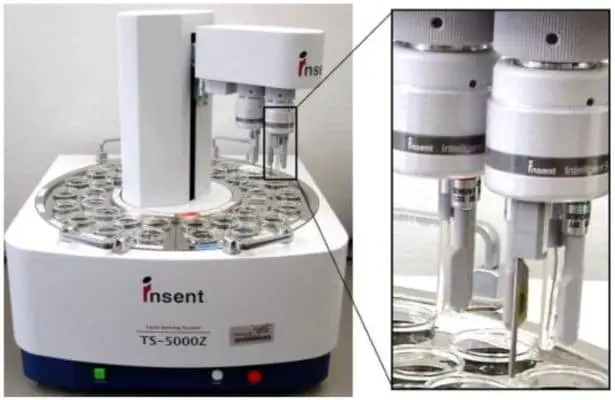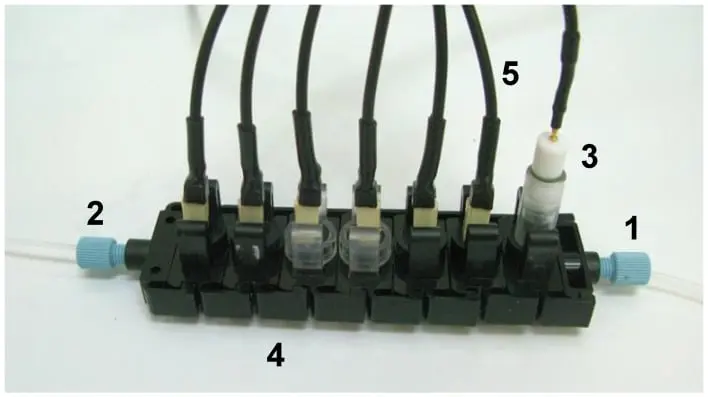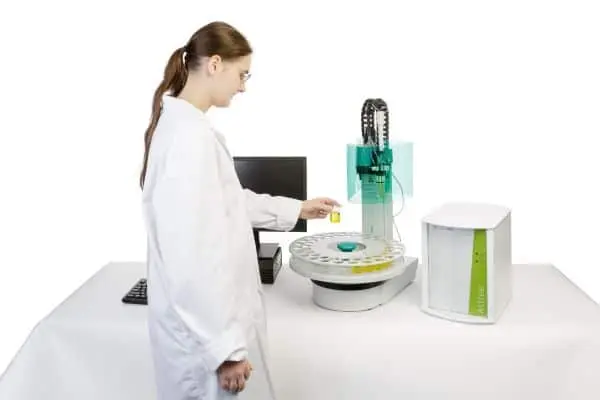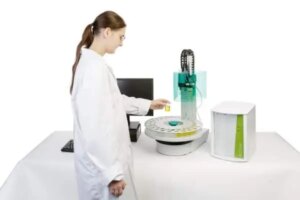Electronic Tongue can analyze food taste, water samples, and other tests. You might not be alone if you want to know more about this analytical sensory tool. Here is everything you need to know about the electronic tongue.
What you will see?
Electronic Tongue
Electronic tongues can eliminate interferents’ impact and help differentiate highly complex samples. These can be broths from various stages of fermentation; they have practically endless potential uses. The electronic tongue is an analytical instrument comprising an array of nonspecific, low-selective, chemical sensors with high stability and cross-sensitivity to different species in solution. Also, it is an appropriate method of PARC and/or multivariate calibration for data processing. The operational concept was influenced by biological recognition. It gathers data using arrays of non-specific sensors on the tongue or nose and then processes it in the brain.
Electronic tongues use artificial intelligence and chemometric techniques to accomplish the same task. It is namely to distinguish, recognize, or quantify the sample. The first sensor arrays of this type were introduced in the 1990s. They were primarily used for the measurement of ions and heavy metals as well as the assessment of flavour and food product deterioration. When using human expert panels is impractical or inappropriate, it is advantageous to mimic human taste because:
- As in automatic process control, conditions of the process, particularly on an industrial scale.
- Samples that are dangerous or in an extreme state, such as repeatedly sampling medications and pharmaceuticals.
- Economic factors.
Sensors Types and the Resulting Data
Sensor Types
The electronic tongue systems use a variety of sensors. This includes electrochemical (potentiometric, amperometric, voltammetric, impedimetric, and conductometric), gravimetric, and optical (absorbance, luminescence, reflectance, etc.). The perfect sensor matrix would include both cross-sensitive and selective sensors. Cross-sensitivity is the capacity of a sensor to react consistently to a variety of distinct analytes in the solution. This characteristic is present in biological recognition systems with a small variety of partially or non-selective sensors. Olfactory and gustatory receptors provide complex data patterns. It has numerous separate cross-sensitive responses. Incredibly, biological systems can identify thousands of molecules with identical structures.
However, solely cross-sensitive sensors have lesser prediction skills than a mixed selective/cross-selective matrix. Electronic tongues used in automated flow systems can provide additional kinetic data about the sample. Electronic tongue systems are typically constructed with a few too many sensors of a single type. The most popular types are potentiometric and voltammetric.
Voltammetry is only helpful for redox-active substances, even though it can provide higher-order information about the kinetics of the reaction. Potentiometric sensors, however, are perceptive to charged molecules. With these complementary qualities, hybrid electronic tongues combining both techniques can soon come into the stream.
Resulting Data
Even if the sample’s background radically changes, combining data from various sensor types can help identify a particular drug’s fingerprint. Thus, improving classification and identification. Multitransduction, or measuring different sensor qualities, enables this to complete the work. Simple data fusion from physically distinct optical and electrochemical sensors is another option.
Even though, today it does not appear to be a severe threat to sensor arrays with a few dozen of sensors running out of computational power. However, excessive growth in the number of transducers can still cause issues. Too many matrices and careless data handling can quickly lead to over-fitting of the produced models, which will begin to search for the ideal match for the training data set rather than spotting trends.
Commercial Systems

Toko and colleagues created the first electronic tongue sold on the market. Based on Toko’s concept, taste sensing systems from Intelligent Sensor Technology Inc. in Atsugi-shi, Kanagawa, Japan, has seven potentiometric electrodes with lipid-polymeric membranes. The latter is the most recent model and was created for use both in laboratories and as a network system for quality control. It allows for detecting the five basic tastes and flavour characteristics like “richness” and “sharpness.” Both techniques primarily serve to identify and gauge the strength of each flavour in food products and medicines. Astree II is designed to distinguish samples based on their taste characteristics. It has 7 ion-selective field effect transistors (ISFET). Examples of its use in process monitoring, food recognition, taste evaluation, quality control, and the pharmaceutical business.
The Alpha MOS company also sells an electronic nose and a visual analyzer for analyzing colour and shape in addition to taste devices. The PVC and polyurethane membranes used in the Multiarray Chemical Sensor (McScience Inc., Suwon, Korea) are selective for the ions H+, Na+, K+, Ca2+, NH4+, NO3, and Cl. The Sensor System (St. Petersburg, Russia) has seven potentiometric ion-selective sensors. In addition to commercial solutions, customers can also request flavour evaluation services. When developing new goods for the food sector, Aissy Inc. from Tokyo, Japan, offers an accurate study of food products using its taste sensor and associated software. This is especially true for researchers who are unfamiliar with sensor matrix technology.
Nature Inspired Sensors
The same transduction properties as in the case of conventional chemosensors can be used to apply Molecularly Imprinted Polymers (MIP). These are present in biosensors and chemical sensors in the sensor matrix. Although biosensors are sometimes an example of very specificity, many respond with a particular class of compounds (sugars, phenols, etc.). Additionally, they frequently also reveal information about a large number of additional species, specifically inhibitors. MIP sensors can even detect a particular molecule. However, they frequently also offer cross-selectivity, making them ideal for electronic tongue applications.
BioElectronic Tongue
The array was outfitted with multiple biosensors in 1999. The given electronic tongue can benefit from high selectivity and specificity. Also, other sensors can aid in lessening the influence of a complex and shifting backdrop or interferents. Modern biosensors use a wide variety of recognition components. This includes nucleic acids, aptamers, antibodies, cells, phages, and enzymes. The directed recognition reaction of the sensor can be sped up through enzymatic modification. Additionally, this type of sensor makes it possible to get extra kinetic data.
When considered during the chemometric analysis, enzyme inhibition and catalyzed reaction accelerations provide valuable background data that can enhance the final discrimination considerably. Biosensors in electronic tongue systems have applications in science, the food industry, and agriculture. Using a similar trapping technique, the same research team created sensors based on enzymes and chemical catalysts (bisphthalocyanine). This three-electrode matrix was adequate for quantifying six different phenolic compounds and the differentiation of wine musts based on their Total Polyphenolic Index.
Additionally, Bioinspired Electronic tongues were used to analyze herbicides. These are typically evaluated using enzyme inhibition experiments. As the enzyme can be present by heavy metals, a wide variety of pesticides, and other species, the major issue with the inhibition assay is its utter lack of specificity. In this situation, electronic tongue systems can help predict dangerous drugs and provide information about their existence.
Molecular Imprinted Polymers
Enzymatic biosensors can be extremely sensitive and offer information on a variety of substrates and inhibitors that is both selective and cross-selective. Although they frequently experience slow deactivation. Molecularly Imprinted Polymers (MIP) were suggested as alternatives to chemical catalysts. MIP sensors are formed into an array to take advantage of their high cross-reactivity and typically low selectivity. A big, varied matrix may be made relatively quickly and inexpensively because different MIP sensors can be created similarly. Even minor environmental changes can easily cause changes in a protein’s tertiary or quaternary structure. So, molecular recognition using imprinted cavities is eliminated. Fortunately, the use of a sensor matrix can substantially mitigate this effect.
Brain-Machine Interfaces and Animal Models
The idea of in vivo/ex vivo electronic tongues advances bioinspired strategies. This is because, in this scenario, a matrix with individual taste receptors, gustatory cells, or even the entire animal connects electrodes to the right brain area. The scientific difficulty in the case of the brain-machine interface is to decode the data obtained from the cerebral examination of the signal transmitted from the animal’s tongue. The tongue serves as the sensor component, and the relevant brain region serves as the processing unit in this system. This results in signals made up of spikes and local field potentials. This technology already differentiates between the essential flavours of quinine, sucrose, NaCl, and HCl.
Low-Cost Sensor Arrays
Electronic tongue systems frequently give broad information about the sample and identify anomalies. These can be in the shape of damaged food, contaminated water, or alcohol that has been aged with the help of caramel. Due to stringent constraints regarding, for instance, sensors designed for commercial clinical use, the performance of such systems is frequently subpar, or their wider use is challenging. However, even in these situations, electronic tongue systems could be an ideal screening tool. It can indicate the necessity for a more in-depth investigation or point out the issue’s origin. Low-cost sensor arrays would have the best chance of becoming commercially successful for this study.
Electronic tongue systems have a wide range of uses. It generates a significant need for further improvement, particularly given the trend toward affordable diagnostics. Recently, a microfluidic electronic tongue that can recognize fundamental flavours was put out. Low-cost sensors can analyze both the micro- and macro-scales. Also, they can be utilized singly or in arrays to create intricate but affordable electronic tongue systems. The number of existing sensors that could combine this way is nearly unlimited. Some can be colourimetric and electrochemical paper-based systems, electrodes made from CDs, or components of integrated circuit chips.
Applications
The primary function of the tongue in humans is to distinguish between various flavours. Because of this, the most frequent uses of its artificial equivalent are for flavour evaluation and identifying substances involved in taste perception. The first electronic tongue was made to distinguish five basic flavours: umami, sweet, sour, salty, and bitter. Since then, sensors can analyze and categorize the flavours of multicomponent mixtures. Thus, turning them into a flexible instrument popular in the pharmaceutical business, environmental monitoring, and food analysis.
Food
Food products are now inspected along the whole food supply chain to ensure their quality and compliance with safety regulations. In the food sector, there are a variety of analytical techniques, but despite their many benefits, they are time-consuming, expensive, and labour-intensive. New screening techniques can help since certain traits are incompatible with the production, transport, and distribution phases of the modern food supply chain and customer validation. The electronic tongue seems the best tool for the job because it allows for quick, accurate, and direct analysis. It can also be used for automatic online monitoring while processing food.
Recognition and Origin Tracing
One of the significant issues facing the food sector is food authentication. All items must adhere to labelling requirements for brand, origin, ingredients, and production method. The geographical origin is the most critical information because it significantly affects the pricing. When it comes to brand and origin recognition, alcohols are among the items that are most frequently examined. With the help of disposable screen-printed electrodes, the portable electronic tongue system can identify between various larger beers and determine their colour and alcohol content. Additionally, it is possible to find stabilizers, antioxidants, colours, and other ingredients. These are generally added throughout the fermentation process.
Wine samples could be categorized based on the grape used in their production. The system’s affordability, adaptability, and capacity to handle microliter sample volumes are some of its key advantages. Oils, dairy products, non-alcoholic beverages, different types of honey, teas, and coffees are additional product categories that are widely popular regarding label authenticity. A system using metals (Au, Ag, and Cu) and metallic compounds (Ag2O, AgCl, Ag2CO3, and Cu2O) were created to categorize honey according to its botanical origins.
Evaluation of Food Quality and Freshness
Consumer interest in food product quality is constantly rising. Even though there are laws governing food safety, there are still instances of fraud with a desire for financial gain. A trained sensory panel will often evaluate a wine’s fragrance and taste qualities to determine its quality. Another frequently examined component is the determination of the individual phenolic classes and the total phenolic content. This is because phenols significantly contribute to wine’s colour, astringency, and bitterness and serve as a preservative throughout the ageing process. The favourable health effects and flavour characteristics of olive oils are also due to phenols.
Freshness assessment is crucial regarding meat and fish items because spoilt or rotten food can harm consumers’ health. Gluten detection in various foods is another intriguing application of a taste-sensing technology. Currently, a wide variety of goods on the market are “gluten-free.” However, costly and time-consuming methods are mainly used to identify gluten. A microfluidic impedance electronic tongue-based alternative approach for gliadin (one of the proteins that form gluten) measurement can help. The instrument could distinguish between items with trace levels of gluten and those without. A voltammetric electronic tongue can be used to quantify cooked rice’s physical and chemical characteristics, such as softness, stickiness, sweetness, and scent. A potentiometric electronic tongue assesses the time that has passed since the meat started to degrade.
Process Monitoring

Electronic tongues can also be used to successfully monitor food composition alterations during production. Continuous fermentation monitoring enables the detection of microbiological contamination, avoidance of undesirable deviations, and process viability. The only systems capable of handling such samples at this time are electronic tongue systems. These samples are highly complex, exhibit wide variations in the background composition, and require careful study. A deficiency in a particular nutrient can sometimes halt the process or result in undesirable byproducts.
An electronic tongue with electrodes modified with metal oxy-hydroxide and MWCNT can make it easier to analyze carbs while optimizing production. Another form of e-tongue based on miniature potentiometric and voltammetric sensors was used to monitor beer fermentation. Aging is a production phase that frequently comes after fermentation and can enhance the quality of alcoholic beverages like wine. We require alternative methods because the price of wooden barrels heavily influences it. The sensor matrix could tell the difference between natural wine and Cabernet Sauvignon wine that had been macerated with four kinds of oak chips. The type of oak chips added to the wine affects the phenolic content. The system can determine this. Monitoring a ham-curing process is an intriguing example of a sensor array’s use.
Detection of Adulteration and Contamination
It is not only illegal but also dangerous for the consumer’s health if there are unwanted compounds present that are not listed on the label. Therefore, it is crucial to develop quick, accurate, and affordable techniques for identifying contamination in food products. Recently, a genetically modified automated bioelectronic tongue was used to quantify pesticide combinations in milk. In minced beef and saline solution, a voltammetric electrode array can forecast the concentrations of the three most common curing substances—nitrate, nitrite, and chloride. One of the most critical issues facing the food industry is the assessment of contaminants. These are purposefully added in order to lower the cost of production while maintaining the high price of the finished product.
When determining food quality and finding pollutants, pesticides are different substances. In the case of vegetables and fruits certified as ecological, the potential presence of pesticides necessitates further quality checks. Numerous analytical techniques can find these chemicals, including chromatographic and spectroscopic ones. However, they all need specialized tools and sample preparation. In this, electronic tongue systems can effectively monitor herbicides at nanomolar levels.
Water Analysis
Another primary sector in which electronic tongues could supersede traditional analytical procedures is the analysis of water samples. Similar to food monitoring, the attention of the researchers is on creating reliable and low-cost instruments for authenticity and quality assessment. This is mainly for drinking water. Adulterations can occur at any point during transport or storage. So, quality evaluation is necessary throughout the production line and in the packaged finished items. The brand is one of the critical elements in consumers’ product choices. Products from particular producers not only have specific flavour and composition characteristics for food but also for water.
Taste Masking of Pharmaceuticals
Active Pharmaceutical Ingredients (API), including caffeine, ibuprofen, diclofenac, and paracetamol, can effectively treat infections and disorders. The human palate can detect a variety of flavours, each of which can naturally detect either pleasure or distaste. Unfortunately, API’s taste is typically considered unpleasant because it tends to be bitter. A standard method involves covering pills and capsules with a sugar film or tasteless coating shell. Unfortunately, only liquid versions of medications can frequently be used in pediatric and geriatric treatment due to swallowing issues. Several taste masking strategies, such as sweeteners and artificial flavours, can eliminate or lessen API’s bitterness.
Bitterness and taste-mimicking substances can cause hypersensitivity. As a result, their evaluation has become a crucial quality-control factor in creating novel medications. With increased molecular weight and hydrophobicity, peptides become more bitter. It is currently impossible to theoretically forecast the flavour of novel chemical compounds. Initially, panels of willing human participants reported their perceptions regarding flavour. However, the morality of using human test subjects and laboratory animals to determine the flavour of medications in their early stages of research is debatable because it can be fatal in case of allergies.Â
Electronic tongue for API flavour masking
Due to the great degree of flavour complicity, results from human test panellists also differ between individuals. Age, sex, and the tester’s country of origin can all affect how someone perceives a flavour. The electronic tongue was proposed to satisfy the requirement for an artificial instrument for taste judgment that complies with ethical norms. Developing new sensor types that can assess API flavour masking techniques is ongoing. A potentiometric sensor array can distinguish between standard API like ibuprofen and roxithromycin. It was discovered that both chemicals’ taste was similarly masked by microencapsulation. The voltammetric systems showed a more pronounced clustering pattern, while the potentiometric arrays showed similarities.
Other applications
The use of electronic tongue systems goes far beyond the evaluation of taste masking techniques and the study of food products. It is a potential tool for many study domains due to its many benefits. This includes speed and affordability of the analysis and simplicity of the system. Also, in many cases, the ability to assemble an electronic tongue from readily available sensors.
Biomedical Research
Electronic tongue systems may be helpful in physical and analytical chemistry, nanotechnology, biology, pharmacokinetics, and computational sciences. However, biomedical research is where they are most commonly present outside of the food business.
Analysis of Biological Fluids
The electronic tongue can be a diagnostic tool to spot and track the early stages of pathological biological processes. These processes contribute to a wide range of diseases. The electronic tongue can help because of its specificity and technical adaptability. No matter the type of biological fluid, it can detect the target chemical. An electronic tongue makes it possible to distinguish between urine samples from healthy and unwell patients with renal failure. The equipment is beneficial for spotting the early stages of the illness. It can help in the clinical monitoring of kidney illnesses and urine tumors. One of the physiological fluids most frequently employed in diagnostic procedures is blood. Sweat monitoring can be another potential use.
An electronic tongue in this situation might be based on the tattoo sensors. During sweat, they can be placed in various body parts for real-time monitoring of ions, glucose, lactic acid, etc. This wearable tattoo sensor may effectively track an athlete’s progress or spot metabolic problems. For the early identification of cystic fibrosis, a hereditary illness of the endocrine glands, disposable screen-printed sensors that can assess chloride in sweat can help. The potential integration of smartwatches and electronic tongue devices for sweat analysis is an intriguing direction. Samsung recently unveiled a gadget called the Samsung Gear, which has slots for sensors that are currently just physical but that, in theory, might also include biological ones.
In Vitro and In Vivo Studies
Mass-produced, miniature pH and K+ sensors allowed for diagnosing ischemia in stomach tissue. The use of swallowable capsules as research tools for the digestive system is promising. A device of this kind can do numerous electrochemical experiments and communicate wirelessly. This small electronic tongue, which operates on stomach fluid, may help with the detection of conditions including ulcerative colitis and Crohn’s disease. The electronic tongue may be a fascinating option for monitoring the health of cells by detecting particular culture components in vitro investigations due to the limited availability of non-invasive chemical sensors. Sensor arrays offer a variety of analytical and medical uses, from single cells to animal models, due to their adaptability.
However, in order to make meaningful contributions to clinical screening, diagnosis, or therapy, electronic tongues must adhere to a number of strict rules that are specific to medical devices.
Safety
National Safety
Explosive substances are receiving increasing attention lately due to the rise in terrorist acts. It is crucial to develop new analytical approaches to make explosives detection technologies that are more accurate, quicker, and less expensive. In the fields of governmental protection and the investigation of criminal cases, screening various unknown samples in the hunt for various harmful substances is highly common. The bulk of the analytical techniques used today is challenging to use with peroxides. Peroxides are the primary source of explosive material for terrorist attacks. Electronic tongue systems can distinguish between various nitrogen and nitroaromatic chemicals and peroxides. It is also a promising tool for detecting and quantifying any explosive substances. This is because it is simple to miniaturize and employ in on-site experiments.
Environmental Safety
Rapid industrial development creates a large number of poisonous and destructive chemicals. These in the environment cause soil, air, and water pollution. Because some harmful chemical compounds are not biodegradable, they build up in the tissues of plants and animals. The respiratory, cardiovascular, and nervous systems can have impacted by exposure to ozone, carbon monoxide, etc., which can cause asthma, asphyxiation, and various cancers. An intriguing use for electronic nose systems is the early identification of dangerous air and water pollutants in fast-growing cities that can prevent adverse environmental effects like smog development or mitigation.
Another vital component of water regulation is the detection of harmful chemicals, bacteria, and heavy metal ions in freshwater. Both human and animal health may be at risk due to the toxins. It is possible to determine the nanomolar concentrations of these toxins using a variety of biosensors. Wastewater can be evaluated for quality at various stages of purification in a wastewater treatment plant using a miniature bio-electronic tongue.
Conclusion
Electronic tongue systems are of utmost importance because of their unique qualities. This includes the capacity to deal with complicated and shifting environments and lessen the impact of interfering factors. Electronic tongue systems can be customized for various application fields according to various sensing modalities, the potential use of unusual production techniques, and numerous data treatment approaches. Additionally, they are a viable replacement for time-consuming and expensive analytical procedures. This is because they offer precise and quick analysis without needing trained employees. The sensing arrays help address various real-world issues, from food quality analysis to applications like the clinical analysis.
Moreover, it can even help identify explosive compounds in relation to the current issue of terrorist attacks. The customized and cutting-edge technology in innovative tools like intelligent watches or disposable low-cost sensor systems may help this type of system spread even further in the coming years. Thus bringing it closer to the general public.
What are your thoughts about the electronic tongue? Tell us in the comments section below.
















